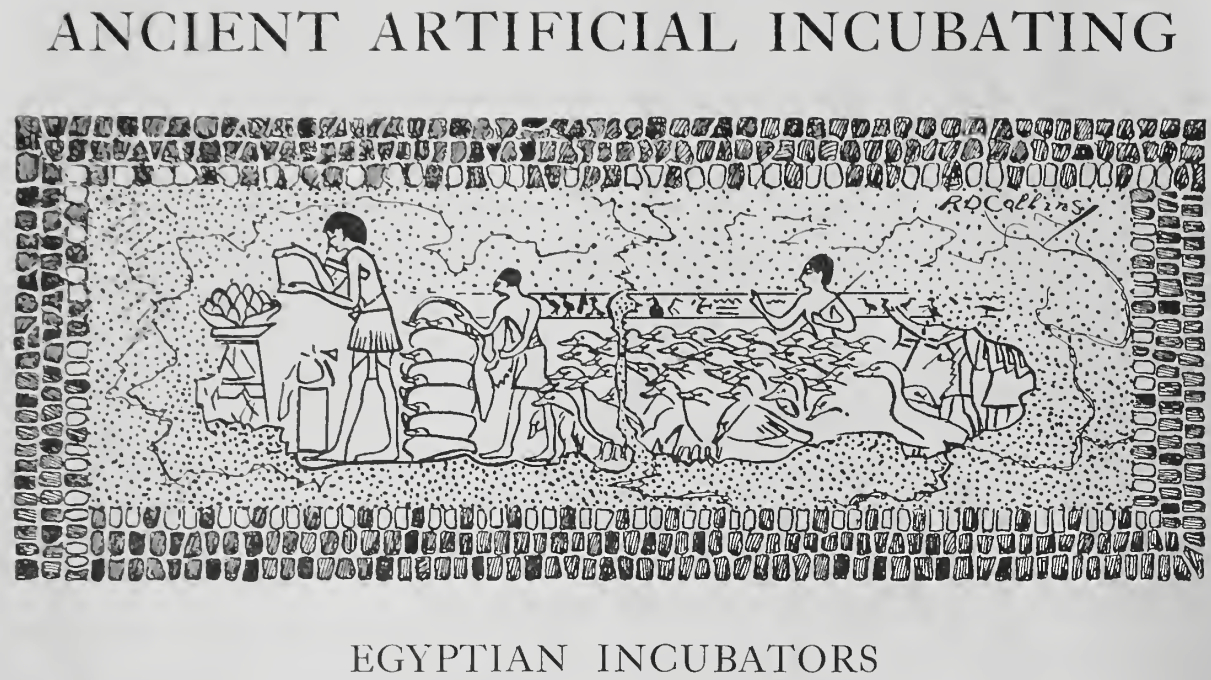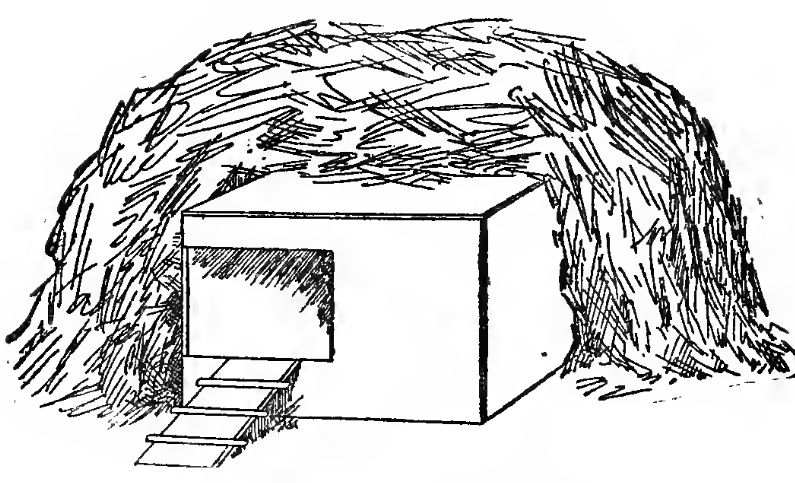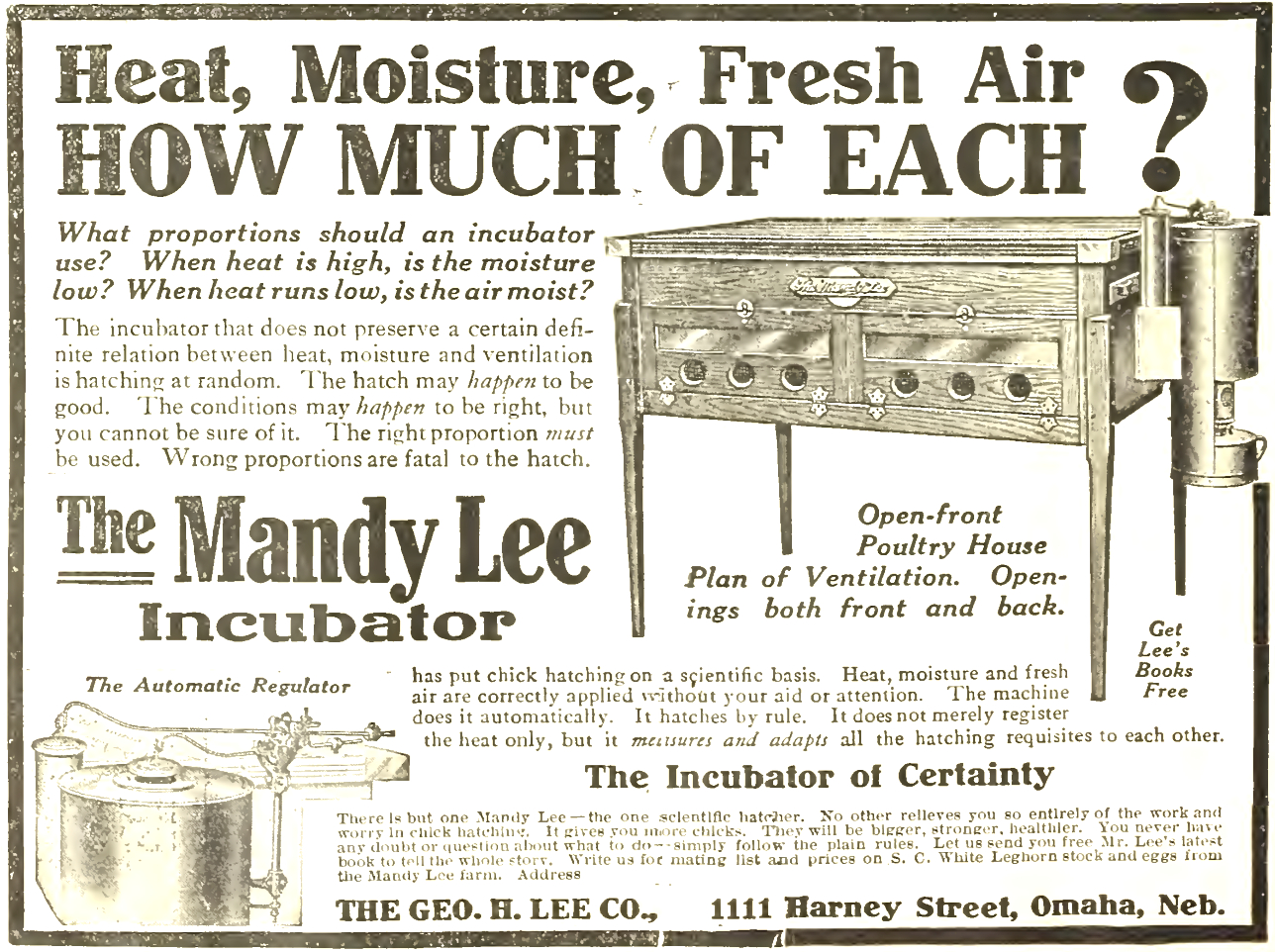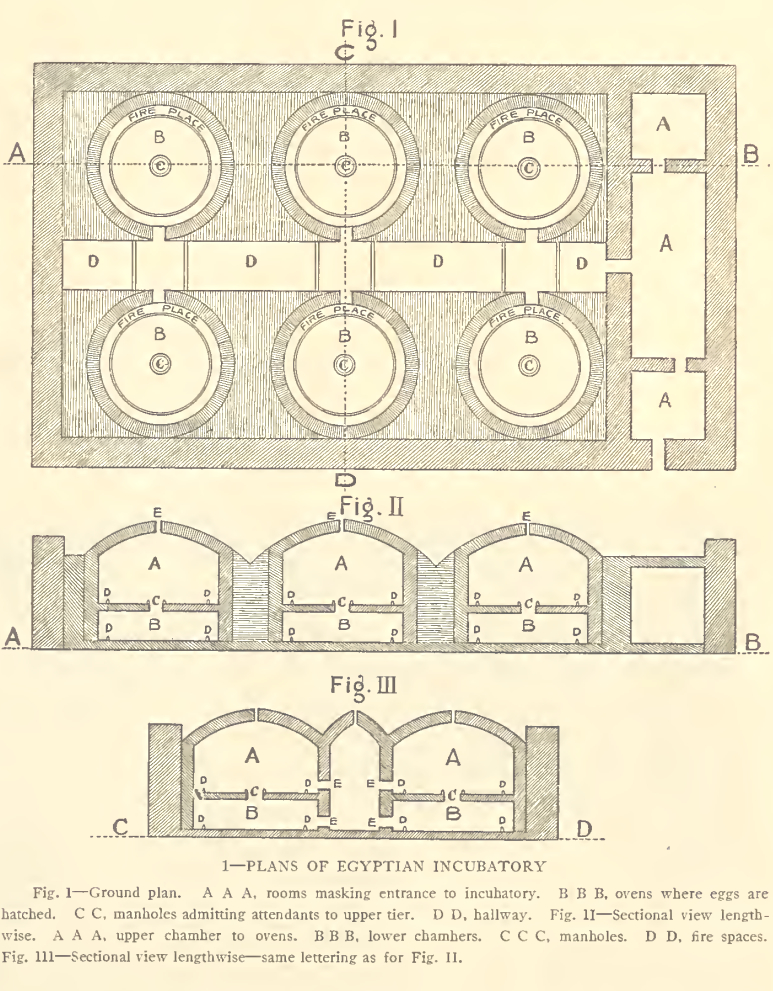The history of artificial incubation.

For the thousands of years since the domestication of the chicken, man had to rely on broody hens and yearly cycles to produce more chickens.
How did they incubate eggs in the old days?
The Egyptians were the first to artificially incubate, hatch and brood chickens. They used to put the eggs against their eyelids to check the temperature was correct.
Below: A depiction of ancient Egyptians producing chicks by artificial incubation.

One of the first recorded methods of incubating was to use the heat of rotted manure to warm the eggs, a technique still in use in the United kingdom in 1910.
Below: The hon. Mrs. Lionel Guest published this picture in the "Every woman's book of poultry" showing a brooder box covered in manure for warmth.

Backyard chicken keepers were the last to benefit from the invention of incubators.
Below: Artificial brooders were often heated by a kerosene or paraffin lamp in the centre of a large metal disc.

When was the first egg incubator made?
Eggs were first artificially incubated by the Egyptians as early as 400 B.C. and the Chinese as early as 246 B.C.
The world’s first practical egg incubator was completed in September 1879 by Lyman Byce and by making use of oil cloth to spread the heat and a bi-metal strip to control temperature, the incubator was able to maintain an accurate temperature of 103 degrees Fahrenheit for three weeks.
Below: Backyard chickens keepers needed to resort to paraffin lamp heated wooden box incubators to artificially hatch chicks.

Ira M. Petersime of Gettysburg, Ohio, USA is credited with inventing the electric egg incubator in 1922.
These incubators used a heat source to warm a large pan of water with the temperature being controlled by ventilation and flame size.
The timeline of artificial incubation:
- Aristotle, writing in the year 400 B.C. told of Egyptians incubating eggs in dung heaps and later in huge egg ovens.
- The Chinese artificially incubated eggs as early as 246 B.C.
- The alcohol-based thermometer proposed by the French naturalist and scientist René Antoine Ferchault de Réaumur in 1730 allows for accurate temperatures to be maintained.
- The first mechanical incubator was invented in 1749 by Reamur in Paris, France along with a book called "l’Art de faire éclore et d'élever en toute saison des oiseaux domestiques de toutes espèces, soit par le moyen de la chaleur du fumier, soit par le moyen de celle du feu ordinaire" or "The art of hatching and rearing domestic birds of all species in all seasons, either by means of the heat of manure or by means of ordinary fire".
- The construction, use, and patent of artificial incubators in the United States dates from 1844.
- Lyman Byce created a coal lamp incubator in 1879.
- The first commercial incubator was made by Hearson in the year of 1881.
- In 1892, Ertel invented and patented a complete line of chicken incubators and brooders. His invention was the hot water incubator which used a kerosene lamp to heat a water reservoir and produced an even heat throughout the cabinet to incubate the eggs.
- In 1922 American entrepreneur Mr Ira Petersime started a small family business called The Petersime Incubator Company in Gettysburg, Ohio. He and his son Ray invent and produce the world's first electric incubator, the Petersime NO. 1 until 1949.
How do you incubate eggs without electricity?
Eggs can be incubated artificially using heat from fires, compost or dung heaps or kerosene (paraffin) lamps.
Before there were electric incubators, eggs were artificially incubated in wooden box incubators with the temperature being controlled by a paraffin lamp.
Below: These Egyptian egg incubation ovens were fired with slow burning dung fires.

The ovens had thick walls and were well insulated.
You can't use sunlight to incubate eggs, it is too unreliable and variable and the eggs would get cold at night and be too warm during the day.
